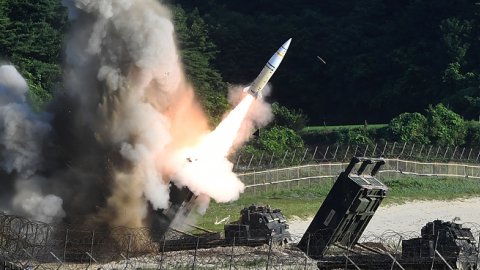Executive Summary
The Department of Defense’s enduring mission is to provide combat-credible military forces needed to deter war and protect the security of our nation.1—National Defense Strategy of the United States of America
p(firstLetter). Since the end of World War II, the United States has relied on deterrence as the centerpiece of its defense strategy. This emphasis endures in the Trump administration’s National Security Strategy and National Defense Strategy. Yet as this study shows, the strategic environment in which deterrence must function has changed dramatically, and continues changing. Moreover, some lessons that we thought had emerged from our Cold War experience regarding the robustness of deterrence strategies have proven false. Similarly, some critical assumptions regarding how rationally humans behave when making decisions under conditions of risk have been overturned by advances in the cognitive and behavioral sciences.
Deterrence involves efforts to prevent a competitor (the object or “target”) from pursuing a proscribed action. Those employing deterrence seek to influence the target’s calculation of the costs, benefits, and risks associated with pursuing the proscribed action. Assuming a rational target, deterrence works by convincing the rival that it has an unacceptably low probability of achieving its goals (deterrence through denial) or that the costs involved in pursuing the proscribed action will exceed any benefits derived (deterrence through punishment).
While it cannot be proven that strategies based on deterrence have maintained the general peace for the past three-quarters of a century, there is strong circumstantial evidence supporting this. In particular, the introduction of nuclear weapons, with their immense destructive power, combined with the development of other increasingly capable weapons, has raised the prospective costs of war to such high levels that waging it is an increasingly unattractive proposition for “rational” policymakers who seek to maximize their overall anticipated gains and minimize projected costs.
That said, the international system is entering a new, more contentious era. The “unipolar era” that followed the Cold War and that saw the United States enjoy a rare period of singular military dominance has passed into history. Not only is military power becoming more diffused, thanks to the introduction of new kinds of military capability; it is also becoming increasingly multidimensional. Moreover, military competitions have expanded progressively into new parts of the globe and new domains to include space, cyberspace, and the seabed.
Given these and other ongoing changes in the international security environment, it seems fair to ask: Will strategies relying primarily on deterrence prove as effective in the coming years as they did during the Cold War and unipolar eras?
This study finds that changes in the geopolitical and military-technical environments are eroding the effectiveness of strategies based on deterrence. Moreover, relatively recent revelations of Cold War history and advances in the behavioral sciences raise important concerns regarding our understanding of how deterrence has worked in the past, as well as its limitations going forward. In brief, the efficacy of deterrence is being challenged across multiple fronts.
The Shifting Geopolitical Environment
The United States confronts an international security system which, unlike the system between 1945 and the present, is not bipolar or unipolar, but multipolar. The emergence of major revisionist great powers in China and Russia, combined with the proliferation of nuclear weapons and other advanced military capabilities to second-tier powers, has increased the number of rivals the United States seeks to deter, providing more opportunities for deterrence to fail.
With respect to nuclear weapons, the radical reductions in U.S. and Russian Cold War nuclear arsenals, combined with the growth in Chinese, Indian, and Pakistani arsenals, is progressively shifting the competitive environment from the bipolar Cold War framework to a multipolar system. Consequently, some nuclear postures that contributed to stability during the Cold War—such as “parity”—may be problematic or even impossible to achieve.
The geopolitical environment is also considerably more dynamic than either the Cold War system or the U.S.-dominated unipolar system that followed it. This makes rapid—and potentially highly destabilizing—shifts in geopolitical alignments and the military balance relatively more likely, presenting additional challenges to executing strategies relying primarily on deterrence.
A Multidimensional Strategic Military Competition
Conventional weapons have become increasingly precise, capable of effectively striking some targets once reserved solely for nuclear weapons. Advances in their design have enabled the fielding of increasingly discriminate weapons. Thus the clear distinction that existed for most of the Cold War between conventional and nuclear weapons has become progressively blurred. Yet despite this trend, a significant number of Western political leaders believe nuclear weapons’ only use is to deter others from employing nuclear weapons. This perceived decoupling could lower the perceived risks of waging conventional war. On the other hand, some civilian and military leaders in countries like China and Russia assert that certain types of nuclear weapons are, in some cases, available for use in a major conventional war. Deterrence may be compromised if Western leaders see the risks that nuclear weapons will be employed in a conventional war as minimal, while the Chinese and Russians view these weapons as available for use.
The introduction of cyberweapons, with their enormous but untested potential, has further muddied the deterrence waters. Insofar as cyberweapons reduce senior decision-makers’ confidence in their early warning and command-and-control (C2) systems, they may be compelled to delegate nuclear (or strategic) force release authority to subordinate commanders, increasing substantially the number of individuals who can authorize a strategic attack. If even one of these individuals is more risk tolerant than their senior decision-maker(s), deterrence will be weakened.
If the prospective attacker’s decision-makers believe the effectiveness of a rival’s early warning and C2 systems is significantly compromised, this would logically reduce the anticipated costs (and risks) of executing a surprise attack during a crisis, all other factors being equal. If so, the efficacy of deterrence would be diminished.
The uncertainty over the relative value and effectiveness of these military capabilities is further complicated by the long absence of war between major military powers, which provides the ultimate test of military systems, force structures, and the doctrines governing their employment. As time passes, uncertainty increases with respect to the true nuclear, conventional, and cyber military balances and their interrelationships. The introduction of new capabilities will complicate matters even further. This heightens the chances that prospective belligerents will reach significantly different conclusions about the true military balance and, by extension, the risks of pursuing a proscribed course of action.
Proximity and Speed of Attack
The decline in the efficacy of deterrence is also a consequence of geography. The proliferation of nuclear and other strategic weapons to states in relatively close proximity to one another is significantly reducing attack warning times compared to those that existed between the United States and Soviet Russia during most of the Cold War. Under such conditions, some senior policymakers may feel they need to place their strategic forces on “hair-trigger” alert in a crisis. The incentive to devolve release authority for strategic forces to lower-level commanders would also likely increase. This could enhance deterrence, but it would also increase the risk of accidental or unauthorized use of strategic forces.
Expansion in New Domains
The expansion of military competition in the relatively new domains of space, cyberspace, and the seabed finds a growing number of state and non-state rivals competing for advantage. In each domain, the competition favors the offense. This undermines deterrence through denial since, all other factors being equal, the costs associated with taking a proscribed action are less than those needed to block the action successfully.
In each domain, identifying the source of an attack—especially promptly—is relatively difficult compared to large-scale attacks in more traditional warfighting domains, such as land, air, and sea. This lowers the risk associated with pursuing a proscribed action in these domains and, in so doing, incentivizes risk-tolerant actors, eroding the efficacy of deterrence through punishment.
The Democratization of Destruction
The rapidly increasing ability of non-state entities to inflict large-scale destruction also undermines deterrence, as some groups, like millenarian groups, simply wish to inflict destruction—to “watch the world burn.” In such cases, deterrence through denial is the only possible strategy, as deterrence through the threat of punishment would matter little to those who are willing—even eager—to give their lives to achieve their aims. Indeed, non-state groups have little, if anything, in the way of economic infrastructure and population against which to retaliate.
The Human Condition
Over the past forty years, advances by scholars in the cognitive and behavioral sciences find that human beings cannot be counted on to act rationally in making decisions where risk is involved. Research also finds that there are impediments to our ability to understand how rivals calculate cost, benefit, and risk. Some of these impediments, especially those created by a cultural divide, may prove difficult, if not impossible, to bridge.
Those creating deterrence strategies can derive some comfort from prospect theory, which shows that people are generally less willing to take risks to acquire what they do not have than to preserve that which is theirs. Alas, all too often, both rivals view themselves as in a “domain of loss,” and are thus willing to run relatively high risks in order to prevail. Of course, the more risk tolerant an adversary is, the more difficult that adversary is to deter.
Optimism bias, which appears to be prevalent among political leaders, can lead them to discount the dangers of pursuing risky courses of action and to “double down” when things go badly, as opposed to cutting their losses. Again, a bias toward resolving uncertainty in one’s favor increases a decision-maker’s anticipated gains, reduces prospective losses, and/or diminishes the projected risks in pursuing a proscribed course of action. All work to undermine deterrence.
The need to be treated “fairly” and “honorably” can also skew a decision-maker’s “rational” calculations of cost, benefit, and risk. This can find political leaders rejecting “win-win” deals in favor of “lose-lose” outcomes, further complicating the challenges involved in crafting effective deterrence strategies.
Some Modest Suggestions
In light of these trends, a senior defense policymaker could be forgiven for concluding that strategies relying on deterrence are difficult to craft at best, and a fool’s errand at worst. Yet although the effectiveness of deterrence strategies is declining, strategies based on deterrence should hardly be abandoned. Such strategies can and have been successful. Humans, when making decisions, do weigh the costs, benefits, and risks of their decisions. And even highly risk-tolerant leaders, including tyrants, are not necessarily reckless when it comes to making decisions under conditions of risk.
Simply stated, all is not lost when it comes to deterrence. True, there are formidable challenges involved in developing any effective strategy against a serious geopolitical rival. Still, there is nothing “automatic” about deterrence. Crafting effective deterrence strategies in today’s environment will require hard and sustained intellectual effort by talented strategists.
Toward this end, some useful first steps to improve the crafting of contemporary strategies based on deterrence are listed here.
**Have Decision-Makers Become “Human-Decision-Making Literate”**
Senior defense decision-makers and those responsible for constructing strategy need to understand the limitations on human decision-making under conditions of risk. This does not mean they must immerse themselves in the cognitive and behavioral sciences. It does, however, mean they must have a clear awareness of what these advances tell us regarding deterrence strategies’ prospects for success.
**Understand the Competition Better**
If you want to deter someone, particularly if that someone is a tyrant or has achieved absolute rule, it is a good idea to find out as much as possible about that individual. It might be best to give attention here to identifying what these leaders most value and fear losing to enhance deterrence strategies based on punishment.
**Plan More Realistically**
Given that strategic warfare is increasingly multidimensional, the Defense Department should conduct a comprehensive net assessment of the strategic military balance. This means building upon the Nuclear Posture Review and Missile Defense Review, which focus on a narrow part of the competition. It also means developing a clear understanding of how the Chinese and Russians, in particular, view strategic and large-scale conventional warfare.
**Revise Escalation Ladders and Paths**
Deterrence strategies can benefit from a fundamental rethinking of vertical and horizontal escalation ladders, including cross-cutting conventional and strategic warfare escalation paths. Now that there are new means of promptly and effectively attacking strategic targets, like precision munitions and cyber payloads, along with nuclear weapons employing advanced designs, the Cold War conventional/nuclear vertical escalation ladder is badly in need of revision. The same is true for horizontal, or geographic escalation.
Once the revised escalation ladders and paths are completed, planners can work to identify those areas where the United States enjoys an advantage over its rivals and those where it does not. They can also pursue initiatives to establish positions of advantage where they are most needed to fortify deterrence. These efforts should be informed by identification of rival power escalation ladders/paths.
**Enhance Early Warning and Command-and-Control Systems**
Given the compression of attack warning times owing to increased geographic proximity and high-speed means of weapons delivery, efforts should be made to “buy back” warning time at a cost that does not exceed what it would take for rivals to cancel out the gains. Should this prove successful, it could strengthen deterrence by reducing, if only at the margins, the temptation to strike first in a crisis.
**Enhance Intelligence Efforts Associated with Attribution**
An inability to determine the source of an attack, and to do so promptly, risks undermining deterrence strategies based on the threat of inflicting prompt, unacceptable punishment on the target. The problem might be ameliorated through increased intelligence efforts, particularly human intelligence (HUMINT) and signals intelligence (SIGINT).
**Exercise Capabilities to Lower Uncertainty**
One way to reduce U.S. (and rival) uncertainty regarding the effectiveness of new capabilities is to conduct realistic exercises at the operational level of war—the level at which campaigns are conducted. While not a substitute for war, such exercises—especially when conducted on high-fidelity training ranges—can significantly enhance our understanding of the prospective effectiveness of various military doctrines, force structures, and capabilities. To the extent that they can, this may help reduce divergent views of the military balance and, in so doing, enhance the effectiveness of strategies relying on deterrence.

















